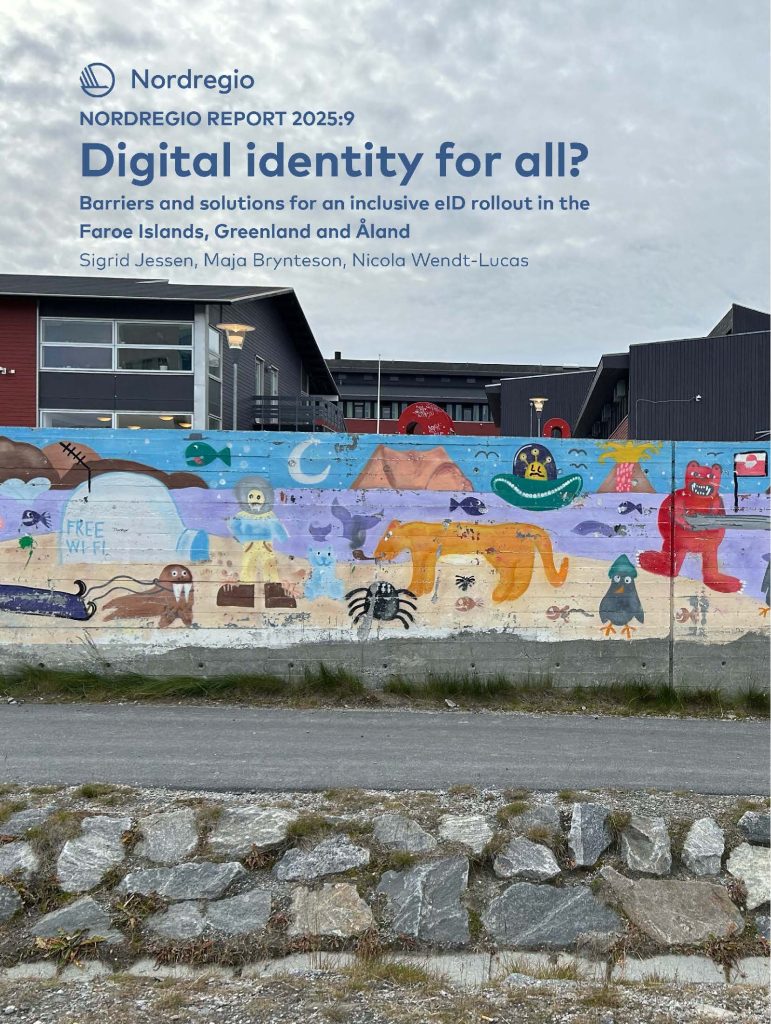Digital identity is central to everyday life in the Nordic countries – but what happens when not everyone can log in? A new report from Nordregio investigates how electronic ID (eID) systems are being implemented in Greenland, the Faroe Islands and Åland, and what it takes to ensure that digital inclusion becomes the starting point, not an afterthought.
Between 90 and 98 % of people in the Nordic countries now use electronic ID to access public services, banking, and digital communication. But this high uptake masks significant gaps, especially in smaller and more remote areas.

Nordregio’s new report, Digital identity for all? Barriers and solutions for an inclusive eID rollout in the Faroe Islands, Greenland and Åland, explores how three societies – each with distinct political and infrastructural contexts – are navigating the transition to digital identity systems. Drawing on 50 interviews with public officials, NGOs, banks and civil society actors, the study highlights both structural barriers and emerging solutions for how to succeed with an inclusive eID rollout.
Context matters – one size does not fit all
The three cases represent very different approaches. The Faroe Islands have built their own national eID system, Samleikin. Greenland has adopted Denmark’s MitID, while Åland relies primarily on private bank-issued IDs.
Faroese Samleikin, prioritised user inclusion from the outset. The system is voluntary, available in multiple formats (including USB for those without smartphones), and supported by physical helpdesks, phone support and outreach activities. Civil society organisations were involved early in the rollout to identify barriers and tailor support to different user groups.
Greenland, by contrast, uses Denmark’s MitID – a system developed for the Danish context, which may not fully reflect Greenland’s unique geographical, societal and linguistic landscape. Challenges have included limited internet access, language barriers, and a lack of coordination between Danish and Greenlandic authorities. At the same time, efforts are underway to improve support, expand translations into Greenlandic and involve local actors in service delivery.
“Digitalisation is often framed as a way to simplify people’s lives – but when systems are designed without considering the diverse realities on the ground, they can instead become new sources of exclusion,” says Maja Brynteson, researcher and co-author of the report.
Åland’s situation is different again. Citizens rely primarily on bank-issued IDs – a model that works for many, but excludes those without access to banking services or the necessary identification documents. Despite strong broadband infrastructure, the report highlights Åland’s “digital debt” – a gap in digital maturity that affects the accessibility of public services.
Despite these differences, each setting shows how a one-size-fits-all approach can fail to account for real-world barriers, including limited internet access, missing identification documents, and services not available in the local language. These issues disproportionately affect older adults, people with disabilities, recent immigrants and others in vulnerable situations.
Twelve takeaways for digital inclusion
The report concludes with twelve key takeaways for policymakers aiming to implement inclusive digital identity systems. These include:
- Make digital inclusion a starting point, not a secondary concern
- Involve civil society and underrepresented groups in design and rollout
- Provide analogue options as long as digital access is not universal
- Ensure services are available in relevant languages and accessible formats
- Clarify institutional responsibilities for implementation and support
- Address affordability and connectivity barriers to ensure equal access
“Digital inclusion must be the foundation, not a feature added later,” says Brynteson. “Without it, we risk undermining not only access to essential services, but also democratic participation.”
Relevant beyond the island regions
While the report focuses on three specific societies, the insights are highly relevant across the Nordic Region and beyond. As national governments and EU actors prepare for the next phase of eID development under eIDAS 2.0, this study provides timely input on how to avoid exclusion in digital transitions.



